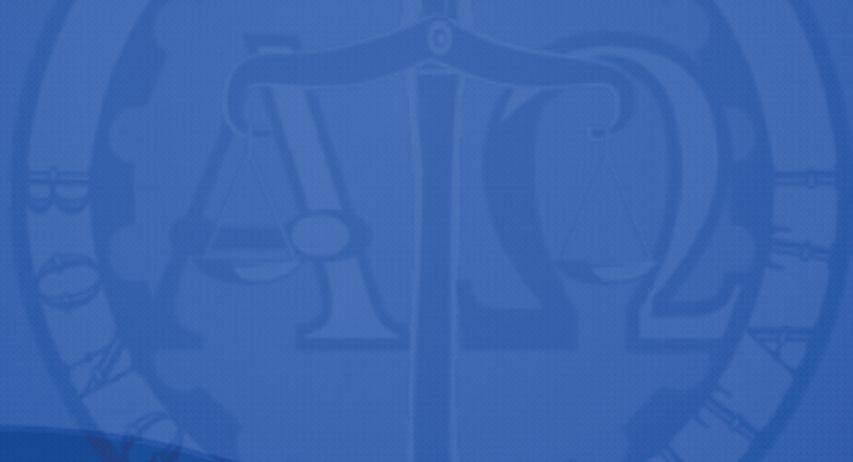Przegląd instrumentów politycznych stymulujących gospodarkę cyrkulacyjną: analiza przypadku Polski
Agnieszka Karman
Uniwersytet Marii Curie-Skłodowskiej w Lublinie , Polskahttps://orcid.org/0000-0001-7429-5938
Abstrakt
Celem artykułu jest przegląd instrumentów politycznych stymulujących gospodarkę cyrkulacyjną. Przegląd został wykonany z użyciem bazy Science Direct. Cztery grupy potencjalnych instrumentów zostały zidentyfikowane i scharakteryzowane: informacyjne, legislacyjne, ekonomiczne, organizacyjne. Kolejno przeprowadzona została pogłębiona analiza zastosowania wyróżnionych instrumentów w warunkach Polski. Badania potwierdziły szerokie wykorzystywanie instrumentów legislacyjnych i ekonomicznych (cele, bezpośrednie regulacje prawne, poszerzona odpowiedzialność producenta, opodatkowanie), niewystarczające instrumentów informacyjnych (kampanie informacyjne, eko-znakowanie) oraz znikome organizacyjnych (ekologiczne parki przemysłowe, cyrkulacyjne zamówienia publiczne). Wyniki badań wskazują, że konieczna jest kompleksowość wsparcia, co oznacza wymóg wprowadzania nowych, dedykowanych instrumentów politycznych.
Słowa kluczowe:
Instrumenty polityczne, prawne & ekonomiczne instrumenty, przegląd literatury, gospodarka cyrkulacyjnaBibliografia
Adams, K., Osmani, M., Thorpe, T., & Thornback, J. (2017). Circular Economy in Construction: Current Awareness, Challenges and Enablers. Proc. Inst. Civil Eng. Waste Resour. Manag., 170(1), 15–24.
Adjei-Bamfo, P., Maloreh-Nyamekye, T., & Ahenkan, A. (2019). The Role of E-Government in Sustainable Public Procurement in Developing Countries: A Systematic Literature Review. Resour. Conserv. Recycl., 142, 189–203.
Alhola, K., Salmenperä, H., Ryding, S. O., & Busch, N. J. (2017). Circular Public Procurement in the Nordic Countries. Rosendahls: Nordic Council of Ministers, TemaNord.
Alhola, K., & Salmenperä, H. (2019). Summary Report Work Package 2.1 State-of-the-Art. on Circular Procurement Policy in the Baltic Sea Region. Helsinki. Retrieved from http://circularpp.eu/wp-content/uploads/2019/06/Summary-Report-WP-2.1-State-of-the-art-of-Circular-Procurement-Policy.pdf (15.02.2022).
Aranda-Usón, A., Portillo-Tarragona, P., Marín-Vinuesa, L. M., & Scarpellini, S. (2019). Financial Resources for the Circular Economy: A Perspective from Businesses. Sustainability, 11, 888.
Arditi, S., & Wachholz, C. (2017). Policy Options for Circular Economy. An EEB Report and Recommendations for the Italian Ministry for the Environment, Land, Sea. Brussels: European Environmental Bureau (EEB).
Bhave, P., & Sadhwani, K. (2016). Solid Waste Management Legislation: A Review. Environmental Policy and Law, 46, 165–190.
Bicket, M., & Vanner, R. (2016). Designing Policy Mixes for Resource Efficiency: The Role of Public Acceptability. Sustainability 8(4), 366.
Bouwm, I. M., Gerritsen, A. L., Kamphorst, D. A., & Kistenkas, F. H. (2015). Policy Instruments and Modes of Governance in Environmental Policies of the European Union: Past, Present and Future (WOt-technical report 60, pp. 1–46, Rep.). Wageningen: Wageningen University.
Circle Economy. (2019). The Circularity Gap Report. Amsterdam: Circle Economy. Retrieved from https://docs.wixstatic.com/ugd/ad6e59_ce56b655bcdc4f67ad-7b5ceb5d59f45c.pdf (18.12.2021).
Cruz-Pastrana, J. L., & Franco-García, M. L. (2019). Feasibility Analysis of a Cap-and-Trade System in Mexico and Implications to Circular Economy. In: M. L. Franco-García, J. C. Carpio-Aguilar & H. Bressers (Eds.), Towards Zero Waste (pp. 61–80). Cham: Springer.
Dovers, S. R., & Hezri, A. A. (2010). Institutions and Policy Processes: The Means to the Ends of Adaptation. Wiley Interdisciplinary Reviews: Climate Change, 1, 212–231.
EEA. (2016a). More From Less: Material Resource Efficiency in Europe: 2015 Overview of Policies, Instruments and Targets in 32 Countries. No 10/2016. Copenhagen: European Environment Agency.
EEA. (2016b). Environmental Taxation and EU Environmental Policies. No 17/2016. Copenhagen: European Environment Agency.
EEA. (2015). Waste Prevention in Europe: The Status in 2014. EEA Report No 6/2015. Copenhagen: European Environment Agency.
Ellen MacArthur Foundation. (2015). Delivering the Circular Economy: A Toolkit for Policymakers. Cowes: Ellen MacArthur Foundation.
Ekins, P., & Hughes, N. (2017). Resource Efficiency: Potential and Economic Implications: A Report by the International Resource Panel. Nairobi: United Nations Environment Programme.
Ellen MacArthur Foundation [EMF]. (2015). Retrieved from https://www.ellenmacarthurfoundation. org/ce100 (16.12.2021).
EU Ecolabels Key Figures. (2021). Retrieved from https://ec.europa.eu/environment/ecolabel/facts-and-figures.html (28.03.2022).
EU Environmental Implementation Review 2019 Country Report – Poland. (2019). Brussels: European Commission.
European Commission. (2014). Questions and Answers on the Commission Communication “Towards a Circular Economy” and the Waste Targets Review. Retrieved from https://ec.europa.eu/commission/presscorner/detail/el/MEMO_14_450 (16.12.2021).
European Commission. (2015a). Closing the Loop: An Action Plan for the Circular Economy. Brussels: European Commission.
European Commission. (2015b). Communication from the Commission to the European Parliament, the Council, the European Economic and Social Committee and the Committee of the Regions. Closing the Loop: An EU Action Plan for the Circular Economy. COM (2015) 614/2. Brussels: European Commission.
European Commission. (2017). Public Procurement for a Circular Economy. Good Practice and Guidance. Retrieved from https://ec.europa.eu/environment/gpp/pdf/CP_European_Commission_Brochure_webversion_small.pdf (27.12.2021).
European Parliament. (2017). Green Public Procurement and the EU Action Plan for the Circular Economy. Brussels: European Parliament.
Flanagan, K., Uyarra, E., & Laranja, M. (2011). Reconceptualising the “Policy Mix” for Innovation. Research Policy, 40(5), 702–713.
Gargiulo, A., Girardi, P., & Mela, G. (2019). Life Cycle Assessment Della Produzione di Energia Elettrica Nazionale Attuale ed al 2030. Rapporto Ricerca di Sistema 19012876. Milano: RSE. Retrieved from http://www.rse-web.it/temi.page?RSE_originalURI=/temi/sottotema/documenti/1&RSE_manipulatePath=yes&doc-Type_1=yes&resultList=yes,yes&objId=1&docIdType=1,1&typeDesc=Rapporto, Report&country=ita (27.11.2021).
Gavertsson, I., Milios, L., & Dalhammar, C. (2018). Quality Labelling for Re-Used ICT Equipment to Support Consumer Choice in the Circular Economy. J. Consum. Policy, 1–25.
Geissdoerfer, M., Savaget, P., Bocken, N. M. P., & Hultink, E. J. (2017). The Circular Economy: A New Sustainability Paradigm?. J. Clean. Prod., 143, 757–768. doi: 10.1016/j.jclepro.2016.12.048.
Geng, Y., Zhu, Q., Doberstein, B., & Fujita, T. (2009). Implementing China’s Circular Economy Concept at the Regional Level: A Review of Progress in Dalian, China. Waste Management, 29(2), 996–1002.
GUS. (2019). Polska w liczbach 2019. Retrieved from: https://stat.gov.pl/obszary-tematyczne/inne-opracowania/inne-opracowania-zbiorcze/polska-w-liczbach-2019,14,12.html (28.03.2022).
Hammill, A., Harvey, B., Echeverria, D. (2013). Knowledge for Action: An Analysis of the Use of Online Climate Knowledge Brokering Platforms. Knowledge Management for Development Journal, 9, 72–92.
Hartley, K., van Santen, R., & Kirchherr, J. (2020). Policies for Transitioning Towards a Circular Economy: Expectations from the European Union (EU), Resources, Conservation and Recycling, 155. doi: 10.1016/j.resconrec.2019.104634.
Hauschild, M. Z., Herrmann, C., & Kara, S. (2017). An Integrated Framework for Life Cycle Engineering. Procedia CIRP, 61, 2–9.
Henstra, D. (2016). The Tools of Climate Adaptation Policy: Analysing Instruments and Instrument Selection. Climate Policy, 16(4), 496–521.
Hood, C. C. (1983). The Tools of Government. London: Macmillan Press.
IEA. (2011). Summing Up the Parts, Combining Policy Instruments for Least-Cost Climate Mitigation Strategies. Paris: International Energy Agency.
Information of the Minister of the Environment on Municipal Waste Incineration Plants and Their Place in the Waste Management System (in Polish: Informacja Ministra Środowiska na temat spalarni odpadów komunalnych i ich miejsca w systemie gospodarki odpadami). (2019). Retrieved from https://odpady.net.pl/wp-content/uploads/2019/04/Informacja-Ministra-%C5%9Arodowiskana-temat-spalarni-odpad%C3%B3w-komunalnych.pdf (21.11.2021).
Jarząbek, A., Juszczak, A., Szpor, A., & Maj, M. (2020). Czy zaleją nas śmieci?. Policy Paper, 1/2020. Warszawa: Polski Instytut Ekonomiczny.
Klaus, J., Mangalagiu, D., King, P., & Rodríguez-Labajos, B. (2019). Approach to Assessment of Policy Effectiveness. In: United Nations Environment Programme, Global Environment Outlook GEO 6: Healthy Planet, Healthy People. Cambridge: Cambridge University Press.
Konsultacje KPO. (2021). Retrieved from https://www.gov.pl/web/planodbudowy/konsultacje-kpo2 (28.03.2022).
Korhonen, J., Honkasalo, A., & Seppälä, J. (2018). Circular Economy: The Concept and Its Limitations. Ecol. Econ., 143, 37–46.
Landry, R., & Varone, F. (2005). Choice of Policy Instruments: Confronting the Deductive and Interactive Approaches. In: P. Eliadis, M. M. Hill & M. Howlett (Eds.), Designing Government: From Instruments to Governance (pp. 106–131). Kingston, ON: McGill-Queen’s University Press.
Maitre-Ekern, E. (2017). The Choice of Regulatory Instruments for a Circular Economy. In: K. Mathis & B. R. Huber (Eds.), Environmental Law and Economics (pp. 305–334). Cham: Springer.
Masi, D., Kumar, V., Garza-Reyes, J. A., & Godsell, J. (2018). Towards a More Circular Economy: Exploring the Awareness, Practices, and Barriers from a Focal Firm Perspective. Prod. Plan. Control., 29(6), 539–550.
Monier, V., Hestin, M., Cave, J., Laureysens, L., Watkins, E., Reisinger, H., & Porsch, L. (2014). Development of Guidance on Extended Producer Responsibility. Final Report for DG Environment. Brussels: European Commission.
NIK. (2019). Wystąpienie pokontrolne. Działania na rzecz ograniczenia powstawania odpadów z tworzyw sztucznych i ich skutecznego zagospodarowania w Polsce. LKR.410.023.02.2019. Warszawa: Najwyższa Izba Kontroli.
Nusholz, J. L., Rasmussen, F. N., & Milios, L. (2019). Circular Building Materials: Carbon Saving Potential and the Role of Business Model Innovation and Public Policy. Resour. Conserv. Recycl., 141, 308–316.
Odpady przemysłowe w Polsce – co możemy z nimi zrobić. (2021). Przemysł i Środowisko, 9 września 2021.
OECD. (2001). Extended Producer Responsibility: A Guidance Manual for Governments. Paris: OECD.
Park, J., Park, J. M., & Park, H. S. (2019). Scaling-Up of Industrial Symbiosis in the Korean National Eco-Industrial Park Program: Examining Its Evolution over the 10 Years Between 2005–2014. J. Ind. Ecol., 23(1), 197–207.
PARP. (2021). Ocena zapotrzebowania na wsparcie przedsiębiorstw w zakresie gospodarki o obiegu zamkniętym (circular economy). Raport końcowy. Retrieved from https://www.parp.gov.pl/storage/publications/pdf/Raport-kocowy_Ocena-zapotrzebowania-na-wsparcie-przedsibiorstw-w-zakresie-gospodarki-o-obiegu-zamknitym-circular-economy_WCAG.pdf (28.03.2022).
Patil, R. A., & Ramakrishna, S. A. (2020). Comprehensive Analysis of E-Waste Legislation Worldwide. Environ Sci Pollut Res, 27, 14412–14431.
Popescu, R. F. D. (2008). Industrial Ecology and Eco-Industrial Parks: Principles and Practice. doi:10.2139/ssrn.1317231.
Reike, D., Vermeulen, W. J. V., & Witjes, S. (2018). The Circular Economy: New or Refurbished as CE 3.0? — Exploring Controversies in the Conceptualization of the Circular Economy through a Focus on History and Resource Value Retention Options. Resour. Conserv. Recycl., 135, 246–264. doi: 10.1016/j.resconrec.2017.08.027.
Ring, I., & Schröter-Schlaack, C. (2011). Instrument Mixes for Biodiversity Policies. Leipzig: Helmholtz Centre for Environmental Research.
Roadmap for Transformation Towards Circular Economy. (2019). Retrieved from https://www.mpit.gov.pl/media/58665/Mapa_drogowa.pdf (18.11.2021).
Rogge, K. S., & Reichardt, K. (2013). Towards a More Comprehensive Policy Mix Conceptualization for Environmental Technological Change: A Literature Synthesis. Working Papers “Sustainability and Innovation”, No. S3/2013.
Rogge, K. S., & Reichardt, K. (2016). Policy Mixes for Sustainability Transitions: An Extended Concept and Framework for Analysis. Res. Policy, 45(8), 1620–1635.
Saavedra, Y. M., Iritani, D. R., Pavan, A. L., & Ometto, A. R. (2018). Theoretical Contribution of Industrial Ecology to Circular Economy. J. Clean. Prod., 170, 1514–1522.
Schneider, A., & Ingram, H. (1990). Behavioral Assumptions of Policy Tools. The Journal of Politics, 52, 510–529.
Silva, F. C., Shibao, F. Y., Kruglianskas, I., Barbieri, J. C., & Sinisgalli, P. A. A. (2019). Circular Economy: Analysis of the Implementation of Practices in the Brazilian Network. Revista de Gestao, 26(1), 39–60.
Stahel, W. R., & Reday-Mulvey, G. (1977). The Potential for Substituting Manpower for Energy; Report to DG V for Social Affairs. Commission of the European Communities, Brussels (research contract No. 760137 Programme of Research and Actions on the Development of the Labour Market), Study No. 76/13. Geneva: Battelle, Geneva Research Centre.
Strategia na rzecz Odpowiedzialnego Rozwoju. (2017). Retrieved from https://www.gov.pl/web/fundusze-regiony/informacje-o-strategii-na-rzecz-odpowiedzialnego-rozwoju (28.03.2022).
Stan wiedzy Polaków nt. gospodarki obiegu zamkniętego. Responsible Business Forum (Forum odpowiedzialnego biznesu). Retrieved from https://odpowiedzialnybiznes.pl/publikacje/stan-wiedzy-polakow-nt-gospodarki-obiegu-zamknietego/ (28.03.2022).
Statistics & Graphs. (2021). Retrieved from https://ec.europa.eu/environment/emas/emas_registrations/statistics_graphs_en.htm (28.03.2022).
The Ex’tax Project. (2016). New Era New Plan. Europe. A Fiscal Strategy for an Inclusive Circular Economy. Utrecht: The Ex’Tax Project Foundation.
The Ex’tax Project. (2019). Tax as a Force for Good: Aligning Tax Systems with the SDGs and the Inclusive Circular Economy. Case Study Bangladesh. Utrecht: The Ex’Tax Project Foundation.
Tischner, U., Schmincke, E., Rubik, F., & Prosler, M. (2000). How to Do Ecodesign? A Guide for Environmentally and Economically Sound Design. Berlin: German Federal Environmental Agency.
Urząd Zamówień Publicznych. (2017). Stan zrównoważonych zamówień publicznych w 2017 roku – raport. Warszawa.
Valenzuela-Venegas, G., Salgado, J. C., & Díaz-Alvarado, F. A. (2016). Sustainability Indicators for the Assessment of Eco-Industrial Parks: Classification and Criteria for Selection. Journal of Cleaner Production, 133, 99–116.
Vence, X., & López Pérez, S. d. J. (2021). Taxation for a Circular Economy: New Instruments, Reforms, and Architectural Changes in the Fiscal System. Sustainability, 13, 4581.
Vence, X., & Pereira, A. (2019). Eco-Innovation and Circular Business Models as Drivers for a Circular Economy. Contad. Adm., 64, 1–19.
van Vught, F., & de Boer, H. (2015). Governance Models and Policy Instruments. In: J. Huisman, H. de Boer, D. D. Dill & M. Souto-Otero (Eds.), The Palgrave International Handbook of Higher Education Policy and Governance (pp. 38–56). Basingstoke: Palgrave.
Wang, X., Liu, Y., & Ju, Y. (2018). Sustainable Public Procurement Policies on Promoting Scientific and Technological Innovation in China: Comparisons with the US, the UK, Japan, Germany, France, and South Korea. Sustainability, 10(7), 2134.
Wilts, H., von Gries, N., & Bahn-Walkowiak, B. (2016). From Waste Management to Resource Efficiency: The Need for Policy Mixes. Sustainability, 8, 622.
Wilts, H., & O’Brien, M. (2019). A Policy Mix for Resource Efficiency in the EU: Key Instruments, Challenges and Research Needs. Ecological Economics, 155, 59–69.
Witjes, S., & Lozano, R. (2016). Towards a More Circular Economy: Proposing a Framework Linking Sustainable Public Procurement and Sustainable Business Models. Resour. Conserv. Recycl., 112, 37–44.
Xing, J., Silva, J., & Duarte de Almeida, I. (2017). Interest, Design and Assessment of Eco-Industrial Parks in China within a Circular Economy Paradigm. Cambridge: University of Cambridge.
Zaleski, P., & Chawla, Y. (2020). Circular Economy in Poland: Profitability Analysis for Two Methods of Waste Processing in Small Municipalities. Energies, 13(19), 5166. doi: 10.3390/en13195166.
Zgut, E., Zbytniewska, K., Hosnedlova, P., & Szalai, P. (2018). Waste in the Visegrad Four: Poland Leading the Way. Retrieved from https://www.euractiv.com/section/ circular-economy/news/waste-in-the-visegrad-four-poland-leading-the-way/ (17.11.2021).
Zhao, R., Peng, H. & Jiao, W. (2021). Dynamics of Long-Term Policy Implementation of Eco-Transformation of Industrial Parks in China. Journal of Cleaner Production, 280, 124364.
Uniwersytet Marii Curie-Skłodowskiej w Lublinie https://orcid.org/0000-0001-7429-5938
Licencja

Utwór dostępny jest na licencji Creative Commons Uznanie autorstwa 4.0 Międzynarodowe.
Utwór dostępny jest na licencji Creative Commons Uznanie autorstwa 4.0 Międzynarodowe.







